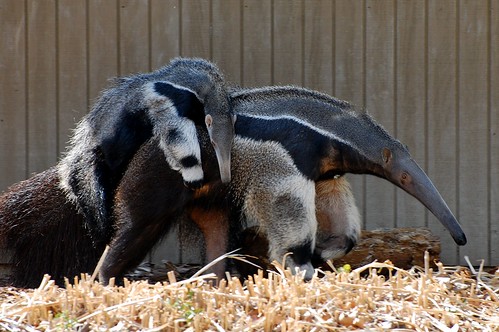Did you know there are 4 different types of anteaters? We're going to spend the next few weeks talking about these amazing animals.
Let's start with the most well known of the anteaters, the giant anteater.
The giant anteater is the biggest of the anteaters and can be 5 to 7 feet in length from the tip of the nose to the tip of their tail.
Anteaters have no teeth.
Anteaters have no teeth.
 by Rusty Clark
by Rusty Clark
Giant anteaters have very big claws on their front feet. They walk on their knuckles with their claws folded up. This helps keep their claws sharp.
Giant anteaters have poor eyesight but an excellent sense of smell.
Males and females are so similar in appearance that you can only tell them apart when they are with their young. The young often ride around on their mother's back.
Giant anteater tongues are about 2 feet in length. Their tongues are sticky and covered in tiny backward facing spines.
Giant anteaters can dart their tongues in and out of their mouth while feeding 150-160 times a minute.
Giant anteater only spend about a minute eating at at any termite mound or ant nest.
Giant anteaters can eat up to 30,000 insects in a day.
Giant anteaters are not aggressive but when threatened will rear up on their hind legs and slash at the threat with their long claws. They use their large tails for balance.
Hope you had as much fun learning about giant anteaters as I did =)






